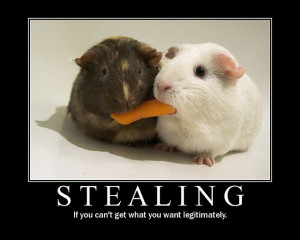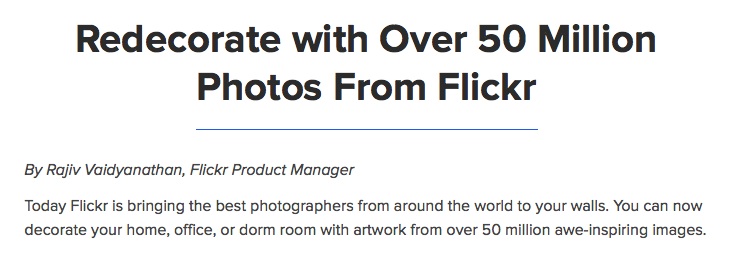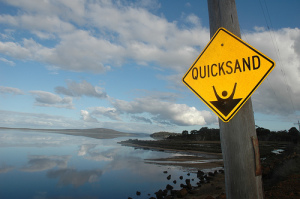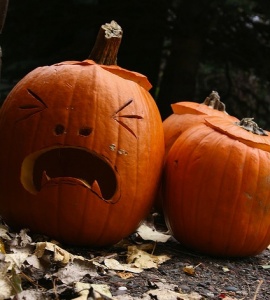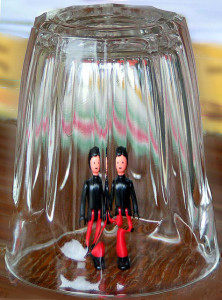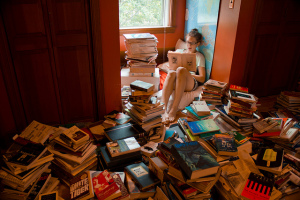
CC image “books” courtesy of Porsche Brosseau on Flickr. Some rights reserved.
How many of you, whether in school now or remembering what it was like to be in school, ever caught yourself scratching your head about some piece of information you were required to learn, memorize, practice, and regurgitate, which you questioned would ever have any use in your future life?
I know I have.
A little while ago, I stumbled across a strange statement that reminded me of that feeling. It was a minimum suggested benchmark for reading: by the 12th grade, so the new wisdom, teenagers should be reading at least 70% nonfiction work.
What?
I’d never seen a number like this before, and yet the topic was thrown out there like a well-known and recognized quantity. Where the hell did they come up with this figure?! And whose recommendation was this, anyway?
I’ve been a bookworm all my life. For as long as I’ve been aware of my reading — people commented often — I’ve also been aware of how people were bemoaning the loss of reading among the young. I’ve been hearing about this, I feel like, forever. Kids are watching too much TV, they’re playing too many video games, et cetera. When I saw the seventy percent figure, my first reaction was of disbelief — wait, someone cares about the proportion of fiction to nonfiction reading? — and the second was: Well, isn’t it great if kids are reading at all??
I had to get to the bottom of this idea — it was so weird. Who cared? Who were these people and where did this recommended minimum come from?
The answer was: the Common Core.
If any of you reading this are teachers or know a teacher personally, you probably got to this answer well ahead of me. The new Common Core standards for education emphasize nonfiction reading from the early ages of grammar school, and recommend proportions of nonfiction to fiction reading for each grade level. They are, as one article I read put it, the reason why educators “are extolling the importance of factual, informational reading” far and wide.
But why would they care about nonfiction reading, as opposed to reading in general? Well, the short answer is: the system.
College, and then the workplace.
In my pursuit to understand the discussion about nonfiction reading goals for students, I read quite a few scholarly articles, by educators and cognitive scientists, specifying what scientific research says with regard to reading, and reading nonfiction in particular. Almost in chorus — 99.9% of what I’ve read and the search results that turn up online — the results focus on getting into college and then parlaying that into the workplace.
Yes friends, once again, this all boils down to a culture in which the value of a proposition rests on how well you can measure it.
Is the only reason to read nonfiction to achieve a certain score on certain tests, and be accepted by certain institutions (that may or may not have anything to do with the material you are reading)? Is the only value and rationale to further my career? Can there be no other reason to want to read nonfiction?
Books — nonfiction books — have no artistic or cultural value?
As a confirmed fiction nut from earliest days, I take issue with this. Nonfiction books are replete with amazing information: also stories! One of my favorite books this year was a nonfiction book: The Wild Trees, by Richard Preston. The discovery of the ecosystems that are redwood trees reads like a thriller, and is full of scientific information as well. If you’re not into trees, check out this article from a college-age student about her discovery of nonfiction texts for other examples of how cool nonfiction can be.
I found one divergent view — an English teacher who advocated for nonfiction reading, who spoke about the resistance of other English teachers to what they saw as an assault on literature and literature education. His point, as I see it, is that we can only develop and make use of skills and information that we are exposed to. I agree; here is a person after my own heart. He’s talking about people, not numbers.
Saying nonfiction is necessary because it prepares us for college is kind of an idiotic justification. We choose what to value at the college level, just as we choose what to value at work. The whole argument is self-referential, because we can change the parameters at any time (and often do). The paradigm advocates standardization and the institutional over the fulfilling and the individual. My eyes are already glazing over.
For me, the value of nonfiction, just as with the value in all reading, lies in critical and independent thinking, analysis, and adaptability, not to mention fun — none of which, I would argue, is embodied in a standardized (hello!) test. Harping on a 70% baseline guarantees none of those skills or the desire to pursue them.
We need a place to start, from which we can go out into the world under our own strength. We need a way to choose and embody individual value. Not a comprehensive way to become a cookie cutter person. And for that, we need to find reading that is interesting and engaging to us… whatever guise it comes in; whether and how much of it can be classified as “nonfiction” or not.
====
What’s your favorite type of reading?

